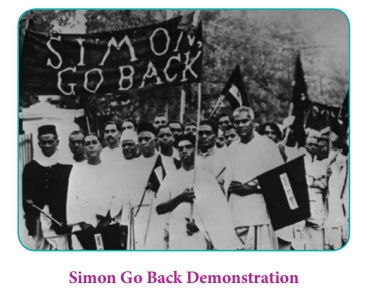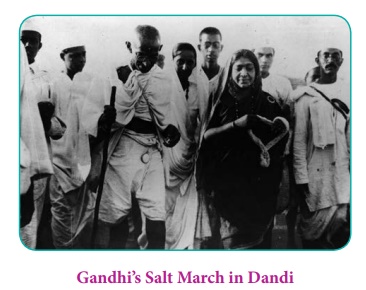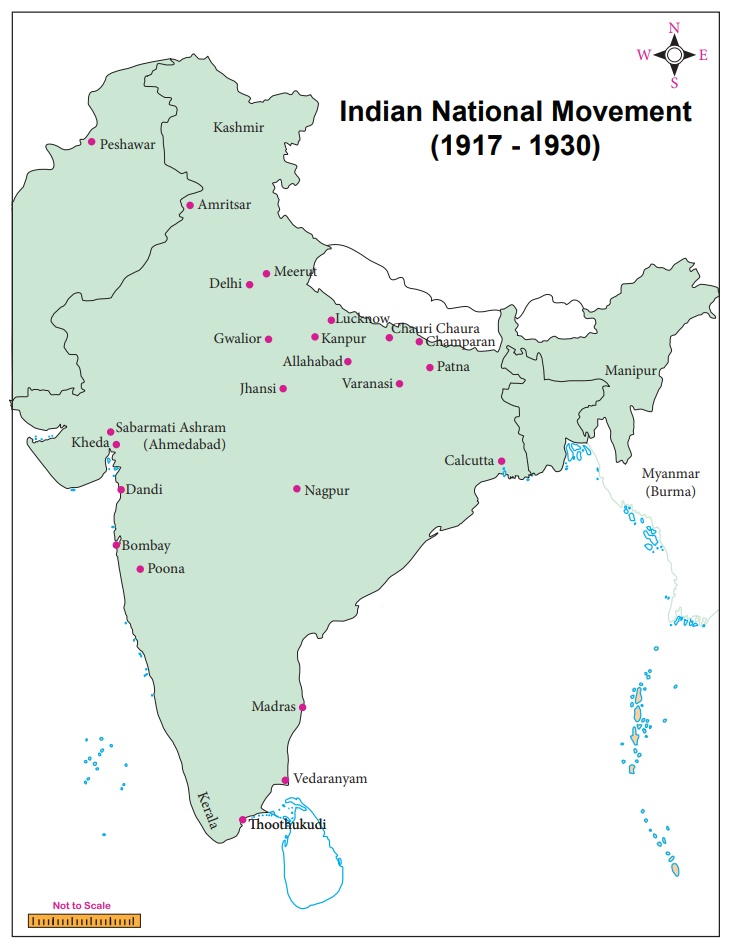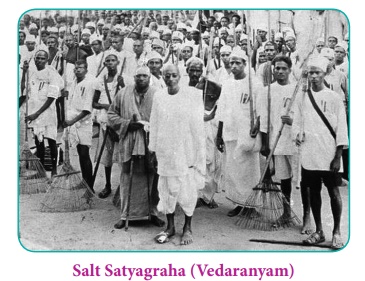Simon Commission – Nehru Report – Lahore Congress
The British were due to consider and announce another instalment of constitutional reforms some time in 1929–30. In preparation, it announced the setting up of Indian Statutory commission (known as ‘Simon Commission’ after its chairman). The commission had only whitemen as members and it was an insult to Indians. The Congress at it annual session in Madras in 1927 resolved to boycott the commission. The Muslim league and the Hindu Mahasabha also supported the decision. A series of conferences were held and the consensus was to work for an alternative proposal. Most of the parties agreed to challenge the colonial attitude towards India and the result was the Motilal Nehru Report. However the All-Parties meet held in 1928 December at Calcutta failed to accept it on the issue of communal representation.
Simon Go Back

But the most important development was the popular protest against the Simon Commission. Whenever the commission went protests were held and the slogan ‘Simon Go Back’ rent the air. The movement demonstrated that the masses were gearing up for the next stage of the struggle. It was at Calcutta that the Congress met in December 1928. To conciliate the left wing it was announced that Jawaharlal would be the President of the next session in 1929. Thus Jawaharlal Nehru, son of Motilal Nehru, who presided over Congress in 1928, succeeded his father.
Lahore Congress Session – Poorna Swaraj
Lahore session of the Congress has a special significance in the history of the freedom movement. It was at the Lahore session that the Congress declared that the objective of the Congress was the attainment of complete independence. On 31 December 1929 the tricolour flag of freedom was hoisted at Lahore. It was also decided that 26 January would be celebrated as the Independence day every year. It was also announced that civil disobedience would be started under the leadership of Gandhi.
Dandi March
As a part of the movement Gandhi announced the ‘Dandi March’. It was a protest against the unjust tax on salt, which is used by all. But the colonial government was taxing it and had a near monopoly over it. The Dandi March was to cover 375 kms from Gandhi’s Sabarmati Ashram to Dandi on the Gujarat coast. Joined by a chosen band of 78 followers from all regions and social groups, after informing the colonial government in advance, Gandhi set out on the march and reached Dandi on the 25th day i.e. 6 April 1930. Throughout the period of the march the press covered the event in such a way that it had caught the attention of the entire world. He broke the salt law by picking up a fist full of salt. It was symbolic of the refusal of Indians to be under the repressive colonial government and its unjust laws.

Vedaranyam Salt Satyagraha
In Tamilnadu, a salt march was led by Rajaji to Vedaranyam. Vedaranyam, situated 150 miles from Tiruchirapalli from where march started was an obscure coastal village in Thanjavur district. Rajaji had just been elected president of the Tamilnadu Congress. The march started on 13th April and reached Vedaranyam on 28th April 1930.
The Thajavur collector J.A Thorne had warned the public of severe action if the marchers were harboured. But the Satyagrahis were warmly welcomed and provided with food and shelter. Those who dared to offer food and shelter were severely dealt with. The Satyagrahis marched via Kumbakonam, Semmangudi, Thiruthuraipoondi where they were given good reception.

The Vedaranyam movement stirred the masses in south India and awakened them to the colonial oppression and the need to join the struggle.















